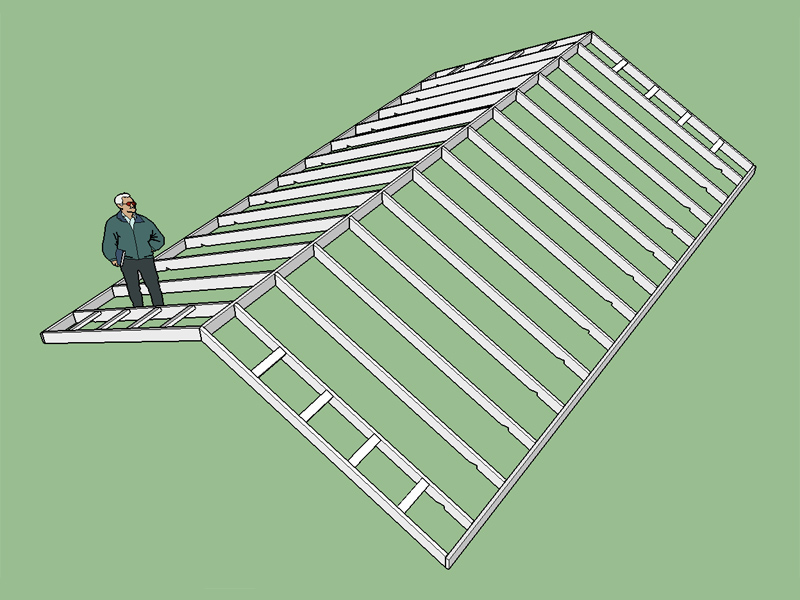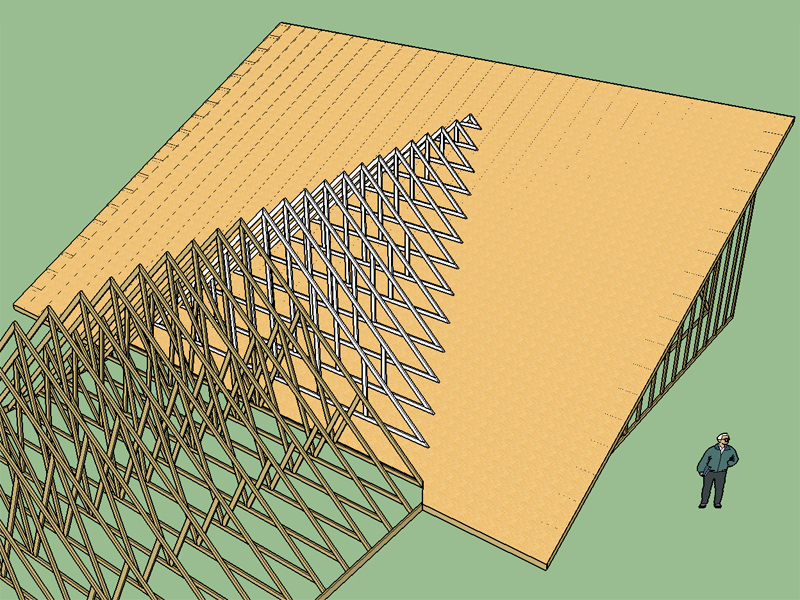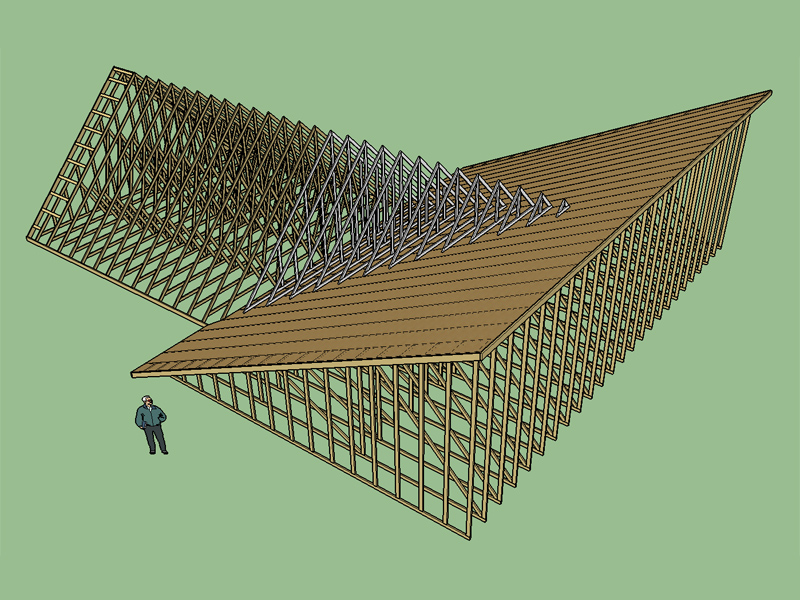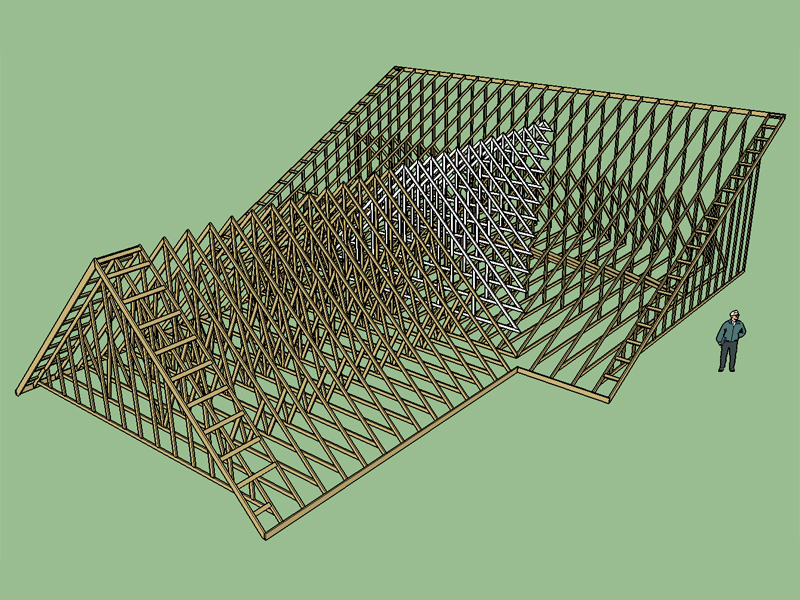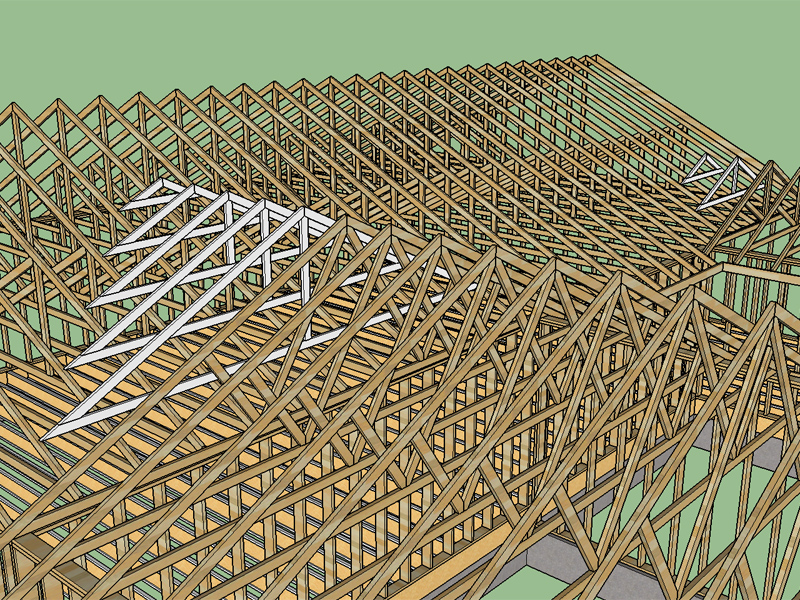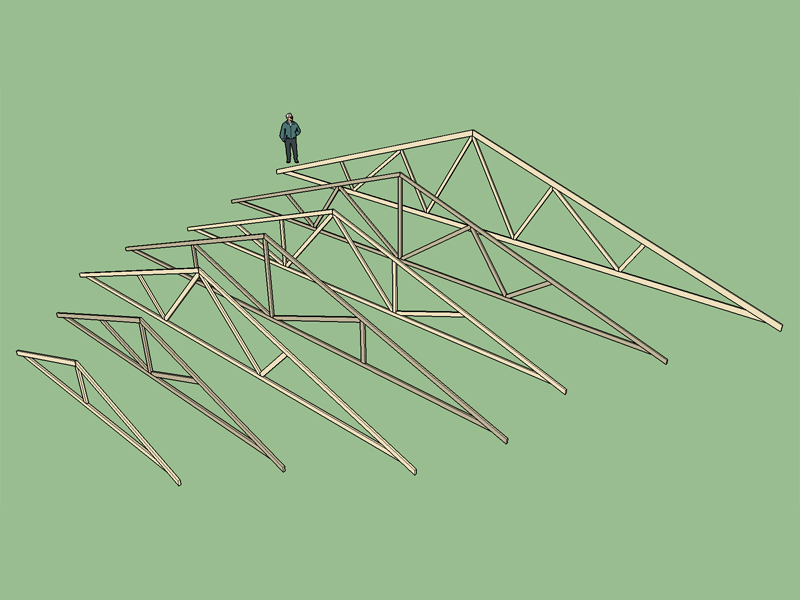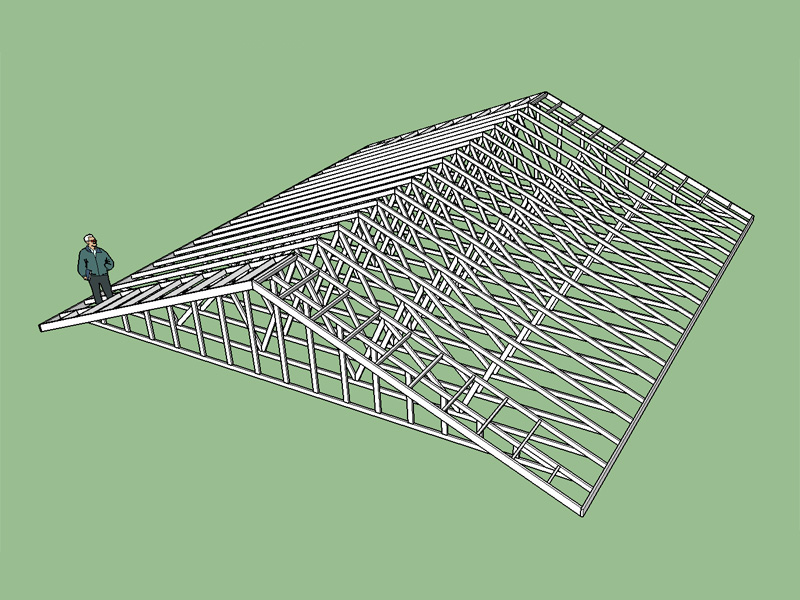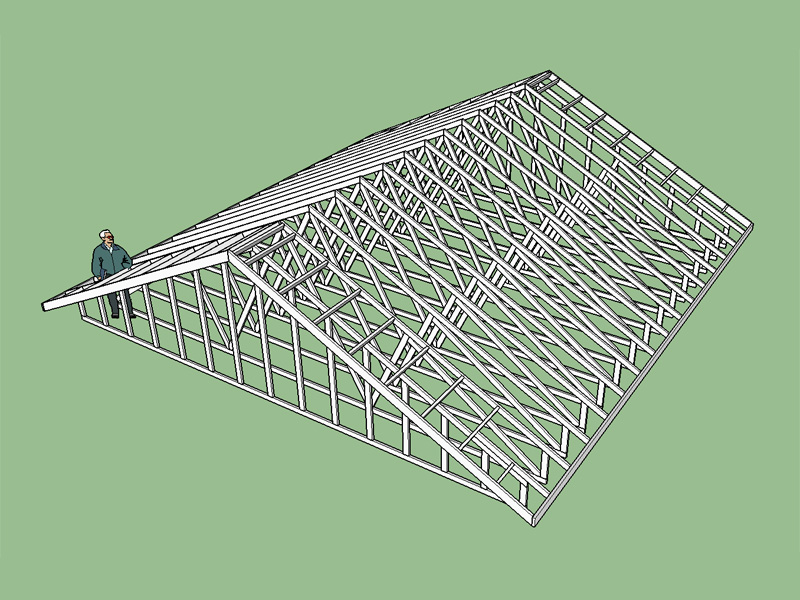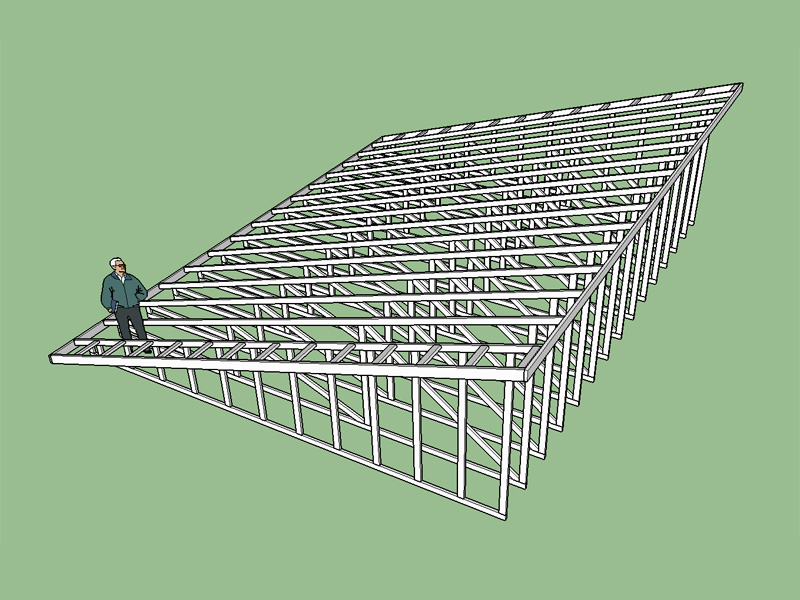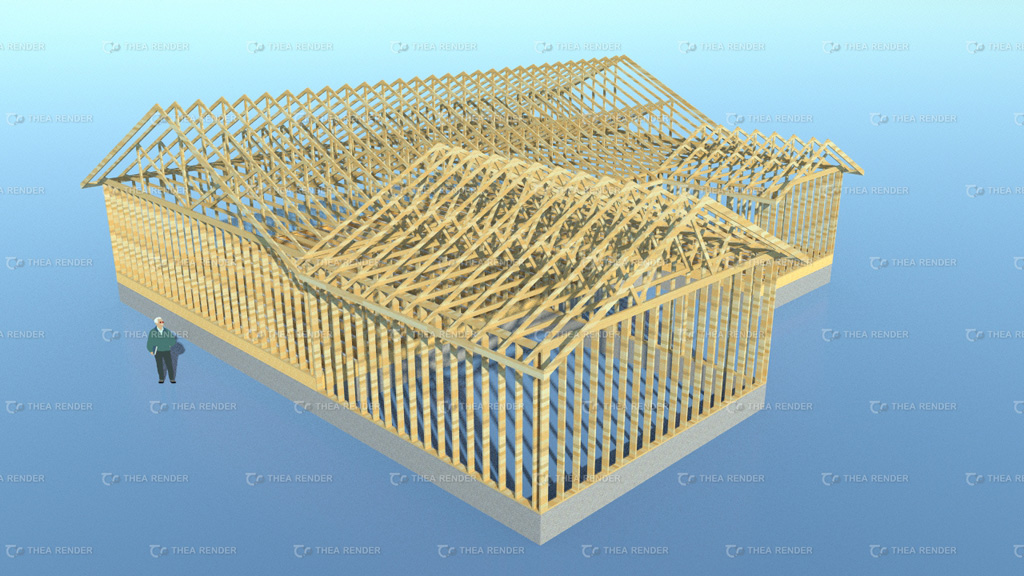I've addressed a few bugs with the valley set algorithm and tested it in as many configurations and orientations as possible. It it more solid now. I suggest downloading the latest version of 1.1.7 that I just uploaded to the server.
Note that the plane of the main roof that is selected needs to be a rectangular shape at the moment to properly register (1st point selected). I usually just select the top face of one of the top chords of the trusses. The second point should be at the centerline of the last truss of the secondary roof line and at the ridge (peak) of this truss, the third point is also at the ridge (peak) but at a point towards the main roof. I really need to put the manual together to document this feature and how to use it, or at least a video.
I also updated the geometry algorithm slightly so that it adds additional verts a 48" o/c when the valley trusses get too large. This is keeping in line with standard practice on these types of valley sets. I can also make this an input if someone requests that it be such.
This update was not that complicated (valley sets) other than trying to figure out how to place the set based only on a plane and two points. Obtaining this information and then figuring out the math and code to compute the vertical distance between the bottom of the first valley truss where it rests on the main roof plane and the peak of the secondary roof line was the slightly painful part. The actual geometry of the valley set was surprisingly easy to code.
The real challenge will begin when I try to add some hip sets, I may push that out for awhile.
